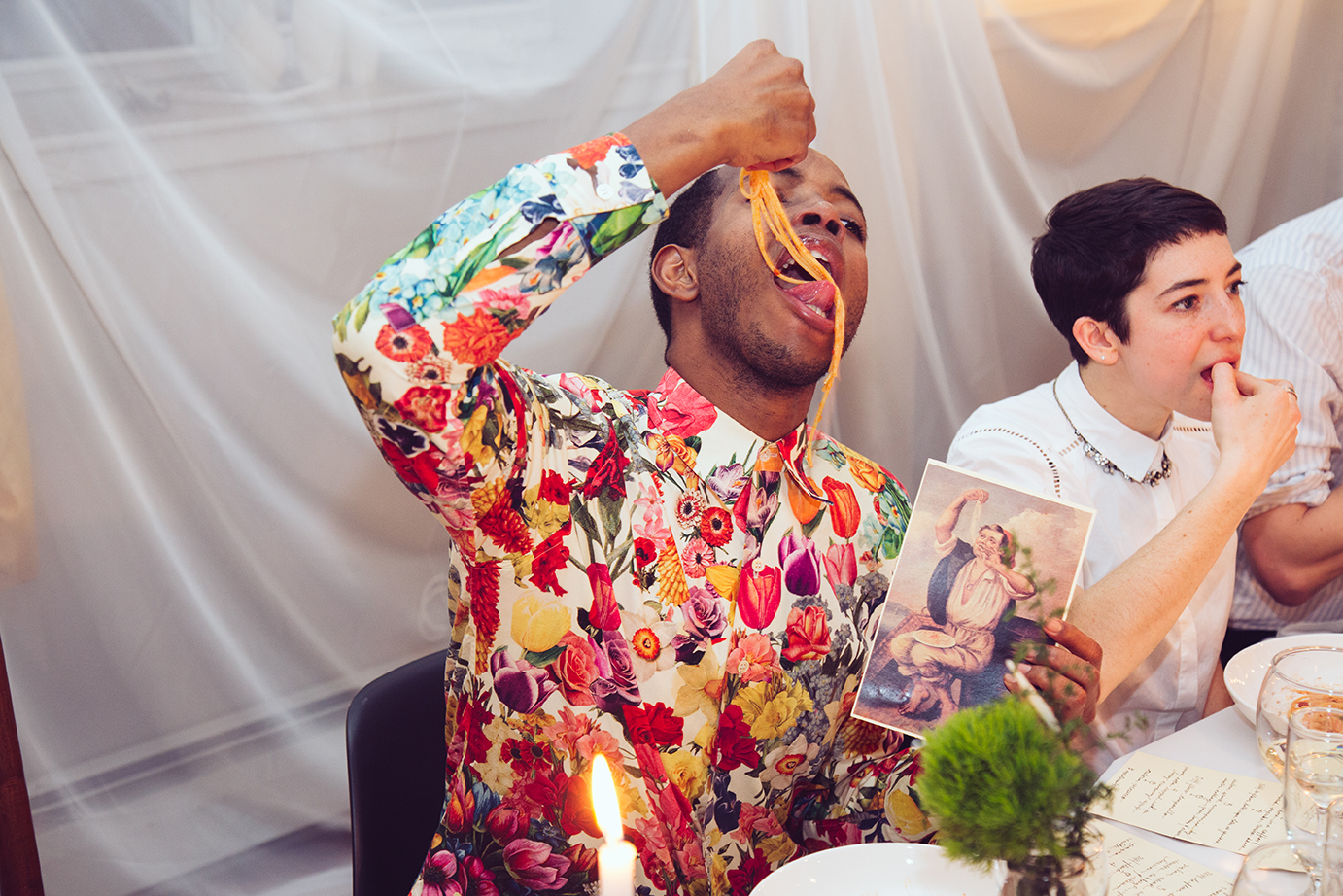The History + Necessity of Utensils
February 2016
This dinner functioned as an exploration of our historical, social, and physical relationship between our body and our food, as is navigated with eating implements. The dinner was a collaboration with artist, chef, and writer A.M. Bang. A historical look at the history of utensils and coverage of the dinner was published on SAVEUR in 2016.
This meal functioned as an exploration of the history and necessity of utensils, particularly within the context of the cultural construction of 'disgust,' and how this is navigating in dining settings. Etiquette knowledge carries valuable cultural capital, and codified rules for the use of cutlery is embedded into the framework with which we use to construct sophistication and civility. Such structures are built, in part, by physical navigation of the emotion of disgust, as an important organizing principle of hierarchies in social settings.
For this meal, we chose to maintain many structures of fine dining, but let our guests play, explore, and navigate the food without their customary tools, which formerly served to ensure avoidances of disgust or incivility.
Utensils were broadly embraced by human cultures as a way to de-contaminate the eating experience, and to distance ourselves from our "uncivilized" appetite. It is an impressive triumph of human culture over nature that we are so determined to avoid touching our food with nothing but metal (or wooden) implements. It allows for security and control over the potentially unruly, or violent, practice of consuming food. The extremity to which fine dining takes the need for such cutlery begins to become overbearing. Often, we require forks even when they are more of a hinderance than an aid. Their purpose, in fact, is more to remove us from emotions of discomfort, disgust, and intimacy.







IG: @aeswist
All work copyright 2024 Allie ES Wist
All work copyright 2024 Allie ES Wist
RADIO SHOW:
Mutamur on Montez Press Radio
About + Contact
Publications
Editorial + Commercial Photo Editing + Producing Portfolio >>>
About + Contact
Publications
Editorial + Commercial Photo Editing + Producing Portfolio >>>
